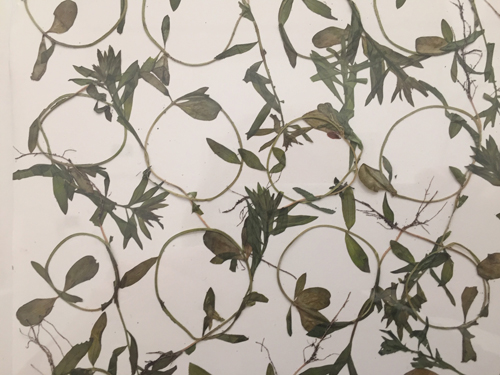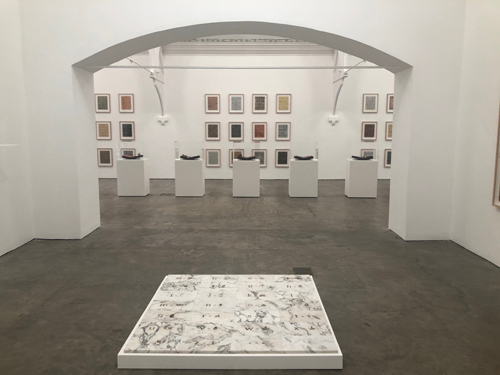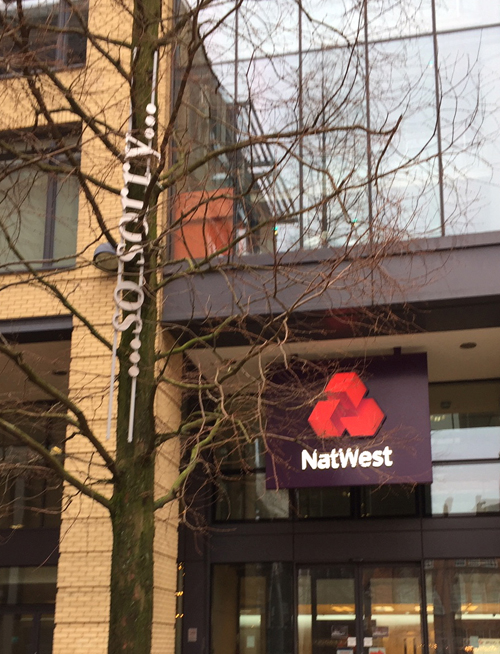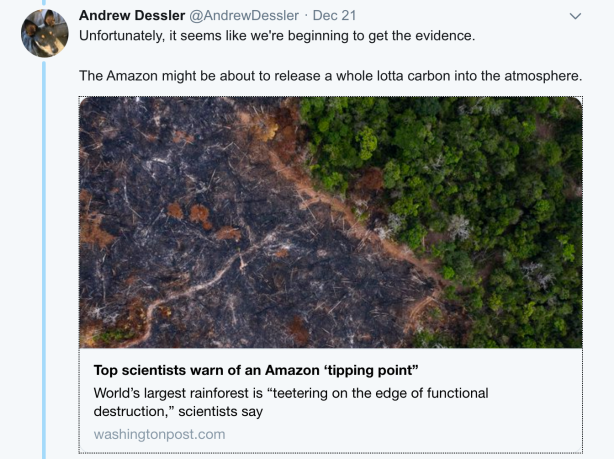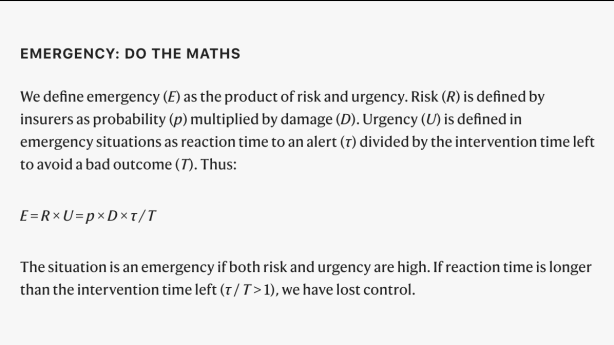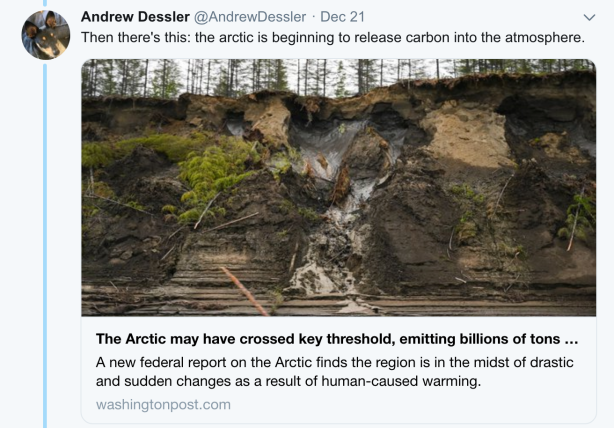By Chrisfremantle
Jo Hodges and Robbie Coleman, artists with a social practice based in rural Dumfries and Galloway, tell us about the residency they undertook at the Bamboo Curtain Studio, Taiwan in September and October 2019. Using food as well as walking as means of exploring, they provide an insight into the political and environmental context. They discuss climate change activism; Moon Cakes; dust; the potential for umbrellas to take on different form as well as meaning; and walking the Southern Upland Way through Taipei. They conclude with some questions regarding international residencies in a time of climate crisis (this was written before the pandemic which is raising another set of questions).
There are several sections to this blog including:
An introduction providing context particularly in relation to Taiwan’s post-war development and its environment;
Residency Work Notes:
- Celebration, making and marking time
- Water: falling, carrying and letting go
- New forms: Tumbleweed
- Museum of the FutureNow
- The Walking of Here to There – A Walk by Robbie Coleman
Final Notes – programme and reflections
Introduction
We arrived in Taiwan on 2nd September 2019 in time for the Mid-Autumn Festival (ä¸ç§‹ç¯€) and also in time for the typhoon season; high humidity, torrential rain, 35 degrees and blisteringly hot sun. All set against a continuous background of conversation about politics, democracy, independence, the protests in Hong Kong, China, environmental action and inaction.
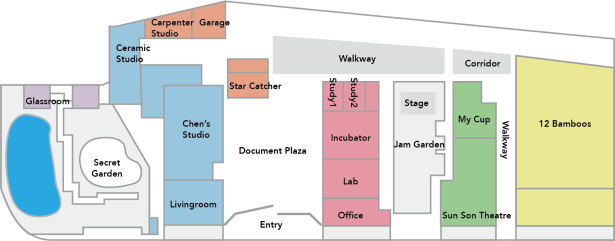 We had been selected for the ‘Creative Talents’ Residency, 2 months at Bamboo Curtain Studio, New Taipei City, Taiwan. Bamboo Curtain Studio (BCS) is an independent arts organisation that has been operating for 25 years. BCS seeks to bring together innovative ecological and social arts practice from around the world, providing a nurturing environment and a platform for open discussion and the development of new ideas, projects and partnerships. BCS practices and promotes sustainability through working with communities to bring awareness about environment, climate change and sustainable living. The studios are situated in an old farm complex of 2,645 sqm with five artists-in-residency rooms and studios; learning space, multi functional performance/exhibition spaces; ceramics & sculpture studio; community kitchen, outdoor stage and garden. BCS is situated near to Zhuwei, a suburb of Taipei, along the bicycle path of the Tamsui riverbank which is about 30 minutes commute from Taipei centre.
We had been selected for the ‘Creative Talents’ Residency, 2 months at Bamboo Curtain Studio, New Taipei City, Taiwan. Bamboo Curtain Studio (BCS) is an independent arts organisation that has been operating for 25 years. BCS seeks to bring together innovative ecological and social arts practice from around the world, providing a nurturing environment and a platform for open discussion and the development of new ideas, projects and partnerships. BCS practices and promotes sustainability through working with communities to bring awareness about environment, climate change and sustainable living. The studios are situated in an old farm complex of 2,645 sqm with five artists-in-residency rooms and studios; learning space, multi functional performance/exhibition spaces; ceramics & sculpture studio; community kitchen, outdoor stage and garden. BCS is situated near to Zhuwei, a suburb of Taipei, along the bicycle path of the Tamsui riverbank which is about 30 minutes commute from Taipei centre.
We had very little knowledge of Taiwan before being selected, so here’s some brief background for context.
Taiwan is a small island about the size of Wales and its geographical location in the South China Sea has given it an important strategic position. Over the centuries it’s been colonized by China, The Netherlands, Spain and Japan. It is currently (and historically) a contested landscape. Whether or not Taiwan is an independent “country†is a grey area. Taiwan is part of its own definition of China; ‘The Republic of China’, with Taipei as its capital and not part of China under the definition of the ‘Peoples Republic of China’ in Beijing. Taiwan has been governed separately from mainland China since 1949 when the ROC government relocated to the island after military defeat by the communists, and locally governed since martial law was lifted in 1987. The government now operating in Taiwan is a self-sustaining, fully functional, democratically-elected government unrelated to Beijing with its own economy and currency. Taiwan has a free-market economy and high-performing industries, highly developed infrastructure and open internet. The majority of the world has official diplomatic relations with Beijing with Taiwan being recognised by only 14 out of 193 United Nations member States. In practice though most countries do retain some economic and cultural ties however Taiwan is severely limited in its diplomatic capacity as well as its ability to participate in international organisations (such as the World Health organization) and events due to the ongoing conflict with the PRC.
In the wider context of Taiwanese international relations and financial support by the Ministry of Culture for international exchanges and residencies, our residency at BCS may be seen as falling into the realms of cultural diplomacy, a type of soft power that includes the “exchange of ideas, information, art, language and other aspects of culture in order to foster mutual understandingâ€. In essence ‘cultural diplomacy’ is a tool to create influence with the aim for encouraging foreign nations to develop an understanding of Taiwan’s ideals and institutions in an effort to build broad support for economic and political goals.
Prior to lifting martial law in 1987, Taiwan experienced rapid change through three decades of fast industrialization (petrochemical plastics) and population growth with little concern for environmental impacts. There was massive pollution of soil, water and atmosphere and reduction of Taiwan’s natural forest cover. We were interested in understanding the consequences of and responses to rapid change in systems (cultural, technical, economic) and in communities. What is current thinking about the structures and systems that need to be developed in response to climate emergency and other social and environmental issues? How are artists engaging with rapid change and how might we understand the world differently when viewed from an Asian perspective?
We met with Brian Hioe, editor of New Bloom Magazine to talk about contemporary politics in Taiwan. He was involved in The Sunflower Movement which involved the storming and occupation of the Taiwanese legislature in March 2014. The movement was largely youth-led and a vehicle for a set of issues regarding questions about Taiwanese identity, the relation of Taiwan and China, and also Taiwan’s geopolitical and socioeconomic position in the world. It resulted in a change of government and also an explosion of creativity in the arts and cultural production. The Sunflower Movement marked the political empowerment of a generation, where politics began to be something that young people felt like they could participate in. There was a large amount of cooperation between the groups involved and many members of the movement have now entered formal politics or work for NGO’s. We also talked to Brian about the ‘Umbrella Movement’ in Hong Kong which Taiwan is watching closely, the role of social media in Taiwan and much more. See https://daybreak.newbloommag.net/ for info on the Sunflower Movement.
The new democratic processes have facilitated the development of a broad range of civil movements and NGO’s active in environmental and social justice. Taiwan for example has become the first Asian country to legalise same sex marriage in May ’19. Since the pollution of the 70’s, there has been a huge rise in environmental consciousness and Taiwan’s environmental organizations have fought to halt industrial pollution and affect environmental policies. People are directly participating in public protests against polluting industries and more recently a new generation of green activists and artists have been moving out from the cities, working with rural villagers to make environmental concerns “trans-localâ€. The resulting cooperation has been successful in stopping many controversial industrial developments . In Taipei we found many cultural and art actions, events, festivals and artists working with reference to environment/ecology/eco-centric practices and issues, however alongside this, a massive preoccupation with issues of national identity.
As we talked to people these two conflicts in contemporary Taiwan became clear, the question of national identity and the conflict between growth and environmental quality. Every day we felt the positive impacts of the recent rise of democratic processes and civic consciousness. But despite the Taiwanese passion for recycling and conservation, we also witnessed evidence of throwaway consumerist culture such as the mainstay of one use takeaway cups and food boxes (huge culture of street food), and 24 hour arcades of ‘clawgrab’ machines – a craze in Taiwan where individuals rent a machine to earn a few extra dollars and fill it with cheap toys and gadgets. Everywhere there’s ugly evidence of previous unregulated industrialization and the piecemeal ongoing attempts to rectify some of the damage. The tension between ecological awareness and growth is palpable. As the economy has changed, many young people have the expectations of the standard of living of their parents but are earning less. We often found ourselves returning to this topic with our daily conversations with Margaret Shui, founder of BCS, who was interested in finding ways of encouraging young people to challenge notions of growth-based prosperity and to find other ways of living based on creativity and community with less material wealth.
Reinaart Vanhoe, artist and author of Also-Space, From Hot to Something Else : How Indonesian Art Initiatives Have Reinvented Networking was also resident at BCS. We had many discussions with him around his work in Indonesia exploring how creative networks have developed outside the western model of art practice, where cultural institutions and funding don’t exist in the same way. Ruangrupa, an arts collective in Jakarta, Indonesia integrate with, explore and reflect the society they are embedded within in informal, almost conversational ways. This lack of rigidity and obvious hierarchy, allows for an open, socially inviting way of working with a surrounding community that might be useful for European organisations to explore. Reinaart is following how they deal with the increasing success (in western artworld terms) of some of their members and the impact that this might have on their core values.
Margaret Shui is passionate about centering the climate emergency and Jo joined her on the ‘Fridays for Future’ Climate Action on 27th September. Jo participated in the ‘Last Supper’ installation outside the Legislature building in Taipei; a table laden with locally sourced food, around which experts and activists sat (including Jo) Each made a presentation about the link between climate change and food production and the gathering was joined by the local minister for the environment and other politicians who spoke to their commitment to make change. Jo spoke about the Climate Change Bill passed by the Scottish Parliament on 25th Sept and gave her thoughts on the need to reconsider the growth imperative. Jo noted that there were comparatively feÂÂw people at the action compared to many capital cities around the world and that many of those attending were expats. She spoke to the representative of 350.org who said that education was valued so highly in Taiwan, that most parents would not allow their children out for school and many students, while supporting the action felt the same. Jo talked to the main environmental NGO, Citizens of Earth about the seeming lack of support for action on Climate Emergency. They said that while there are some smaller NGO’s that focus specifically on climate issues, much of their work is about mitigation and adaptation not under the name of ‘climate change’. For example advocating for land conservation (wetlands & farm lands), coast and coral reef conservation, forest restoration. They also promote industrial transformation and energy transition to fight air pollution and to reduce use of fossil fuels. Work by other environmental NGOs in Taiwan, such as lowering the use of coal power and promoting renewable energy and reducing plastic waste are all considered as part of climate action.
Most Taiwanese people that we met were very keen to hear about our perceptions of Taiwan and alongside our conversations and discussions around politics and environmental action, ran our daily experiences and observations, giving us a different kind of insight… these include the politeness and kindness of everyone; the quietness of crowds; the thousands of scooters and resulting petrol pollution; recycling trucks playing music as they traverse the streets and people gathering and gossiping on street corners with their rubbish bags waiting for them to arrive; the micro economies of street food; typhoons; people of all ages exercising on the paths by the river; night time cycle rides on the free city bikes; elaborate temples used as social centres; the burning of ‘money’ for the Gods in roadside fireplaces: Karaoke everywhere (a major social activity); Lullabies played to herald the arrival of the MRT trains; ants; mosquitos; humidity. Some things seemed familiar, but so much was very different.
Residency Work Notes:
1. Celebration, making and marking time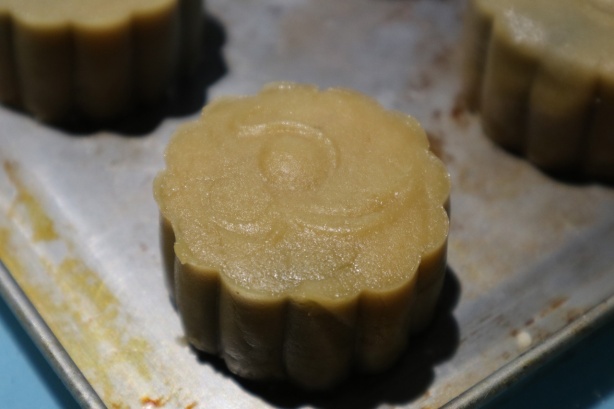
Photo courtesy of the artists
A key part of the contemporary Mid-Autumn Festival celebrations are outdoor barbecues and karaoke in the parks as well as offerings of Moon Cakes between friends and family. Traditional Moon Cakes are filled with red bean paste, sometimes with a salted egg in the centre, to represent the moon and have an imprint on the top of the Chinese characters for “longevity†or “harmonyâ€. In talking about holiday traditions, we discovered that very few people now make Moon Cakes, they buy them from bakeries instead. We were interested in this change and as a way of exploring both traditional and contemporary culture, our first action in Taiwan was to track down the ingredients (not easy) and to learn how to hand make the cakes. To signal the start of our time in Taiwan, we designed a pattern for the top of our cakes relating to the moon’s impact on seed growth.
We followed this successful Mid Autumn Festival baking session by running a Moon Cake making workshop for fellow artists (Five other international artists were resident at the Bamboo Curtain Studios from Netherlands, Thailand, Japan, USA) and studio staff. It was a place for discussion around food, time, tradition and consumerist culture. People don’t feel they have time to make the traditional cakes and so these skills are being lost. We used the engagement with handmade processes to consider issues around contemporary Taiwanese work, family and leisure pressures. Is there value in making more time to make? The Cakes made at the workshop were taken as an offering to participants on the Plum Tree Community Hike on 29th September 2019.
2. Water: falling, carrying and letting go
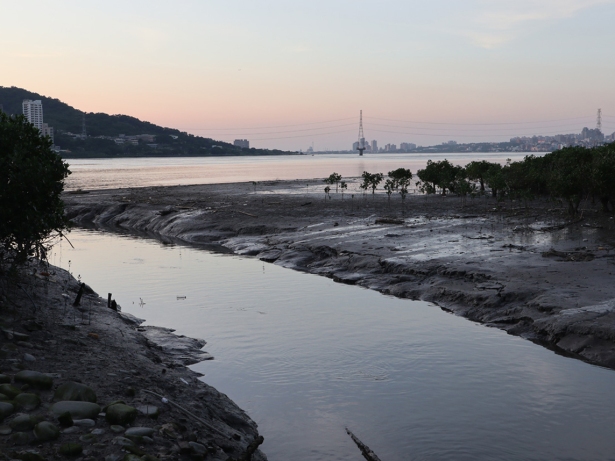
As a creative practice we arrive in a new place with no fixed plan but with an interest in exploring the environmental and social relationships that we find and in fostering hospitality, conversation and exchange through our practice and processes.
We were amazed at how much rain falls around typhoon time and its impact on the city streets, rivers and creeks. The nearby Plum Tree Creek swells massively in size as the rain washes through the city streets and pours into it. As the full moon rises so does the tide in East China Sea and so the Tamsui River rises to the city. We watched as the dusty city water flowed under our local bridge into the Tamsui River and thousands of large fish swam up the creek to amass in huge shoals with their mouths open – consuming the overflow from the city.
Our thoughts turned to the creek that runs close to Bamboo Curtain Studios, and which has been the site of Artist Wu Mali’s project A Cultural Action at the Plum Tree Creek in the past. Thinking about the action of torrential rain on dust became a growing interest. Dust is a collection of minute particles; human and more than human. Skin cells, soil, rock, paper, organic material, concrete, hair…it is a binding layer between all materials and parts of life, we are breathing it in all the time as it is thrown up into the city air by wind and the movement of thousands of people, scooters and cars. The detritus is washed from the streets into the creek by the pounding rain and so we followed the dust to where it settles as silt; where the Plum Tree Creek joins the main Tamsui River. We collected silt from the estuary at night when the moons gravitational pull was at its greatest. We investigated it, exploring its mark-making potential at different dilutions on a daily basis over a lunar month, watching it fade as the moon wanes.
We collected more. On each visit to the shoreline we watched with fascination the shoals of huge black fish arriving with the tide to the edge of the city. This city is a dusty place, every celebration, argument, wedding or funeral makes marks and leaves evidence in the dust. All the sad moments and hopeful dreams of the city were being filtered through the mouths of these black fish.
In the cooler evenings on the roof at the back of the studios we started processing the silt through a series of improvised filters (blankets, beach towels and pillow cases) until we were left with a liquid made of city dust and the erosion of rock and organic matter blown from the farms beyond the city – an emulsion of city, human, animal and more than human traces. As the water gradually evaporated from our material, we were left with a fine clay. So fine that it picked up our fingerprints when we touched it. An idea formed of using the material as a casting medium and of creating a travelling laboratory or studio to take on hikes further up the Creek past the city towards its source in the mountains. We decided to use the dust/human trace/clay to take impressions of the plant life that we encountered on the creek banks as we went.
People work on small plots of land next to the creek and it was easy to strike up halting but friendly conversations about what we and they were doing. After a few days we started giving the cast tiles of botanical specimens as gifts to the people whom we encountered and people returned the next day with fruit or sweets for us. The work had become a mobile site of conversation and exchange. We talked about people’s relationship to the creek – it used to be a social space, people would gather by the river to chat, wash clothes and collect water for the home and vegetable garden. Now the area has become home to thousands of people who cannot afford to live in other parts of the city, high density housing blocks have been built over the creek, they turn on their taps for water at home, and have forgotten or have never known that they have a river flowing through and under them. We discussed how to change attitudes to the creek, how to stop the pig farm nearby polluting it, how to re-engage people with the watercourse and its ecology. In this we are building on steady work by the Bamboo Curtain Studios and hope we have added something of value to the discourse. We enjoyed our days out along the creek, becoming a small social centre of friendly and curious folk.
Our process seemed to create a cyclical way of working, all the materials and liquids we are used in some sort of circular movement, being transformed on the journey in different ways – from the hills, to the creek to the sea and back again, subtly transformed, added to or subtracted from. Sometimes an element was removed such as salt, sometimes a meaning added, such as a simple image of a leaf. We felt in collaboration with the place and the people around us; part of a circular flow of materials carrying ideas and gestures.
More of our work using dust and silt from the river at https://colemanhodges.com/2019/12/15/silt/
3. New forms: Tumbleweed
Our ideas progressed gently on a daily basis, almost as sites of conversation between ourselves. One of these involved the unlikely collision between the typhoon and the political unrest in Hong Kong. Part of our interest was to try and understand the political and activist background to the independence movement in Taiwan and the fast growing environmental sensitivities that are developing, so we met with people that have been involved in those actions over the years to try and get a sense of current issues and how people feel about them. We knew that the historical, political and cultural context is complex, but we tried to get a sense of it. People were happy to meet explain the current fragile politics and on these conversational journeys across the city we also collected broken umbrellas. Famously, Taiwan used to be the worlds leading manufacturer of umbrellas. They are used here for protection from both sun and rain by everyone and after the typhoon the streets are littered with broken ones. Umbrellas are extraordinary examples of elegant design. Folded they are discreet objects that can be used as walking sticks or for capturing errant children or animals, when they are put up they are beautiful examples of tensile design. Broken ones seem to have an emotional, defeated quality that, for us, began to entwine with news footage of the demonstrations in Hong Kong, where umbrellas were/are being used as personal defense against the teargas, smoke bombs and water cannons of the state. On our rooftop studio space we started experimenting with our broken umbrellas and soon realized that however damaged they were as individual objects, in cooperation with other broken umbrellas, they could form strong and resilient new forms and we joined the core geometries, joints and materials to make a spherical form.
4. Museum of the FutureNow
After running a Museums of FutureNow workshop (an ongoing project that generates speculative future scenarios) at an arts festival in nearby Keelung City we began to think about this new form as part of the Museums of the Future Now and developed a series of future histories for our object. These histories formed a type of commentary on our thinking and conversations about politics, environment and future. We also experimented with taking the umbrella form into Zhuewi and installing it in various locations as a way of starting a conversation with curious passers by.
5. The Walking of Here to There – A Walk by Robbie Coleman
Preparation for the walk began by overlaying a section of the Southern Upland Way onto a street map of the city of Taipei – I decided on the section of the route that is nearest to my home in Dumfries and Galloway. Traditional walking routes usually follow ancient walkways between destinations and largely follow the lines of least resistance (waterways, lower gradients, animal tracks, droving roads). Overlaying this flowing journey across an artificially constructed terrain like a modern city would mean a real-time restructuring of the original route, taking the walker into unexpected places and situations. The walk was conducted overnight to avoid the heat and traffic.
My initial thoughts re-imagined the cultural colonization by early European explorers, maybe experimenting with re-naming places that I pass through, and exploring the implications of this type of cultural appropriation in a country with its own very real issues of identity and territory. This seemed especially relevant when we were told that many of the street and place names in Taiwan are transplanted from China by the waves of immigration from the mainland. Streets names that translate as ‘Shanghai Way’ don’t mean anything, as they are not the way to Shanghai and so on.
In reality, the walk turned out to be much more about terrain and the feel of it. I started at midnight at one end of the Red Metro line. This is in a very modern part of the city containing the 101 Building, until recently the highest building in the world. I continued walking through ancient night markets, peaceful suburbs and empty multilane highways.
Taipei is an unusual city in terms of lighting, apart from the very central part, which resembles any other modern city – overlit and overbearing – most of the city is underlit. I have become used to tall office blocks and blocks of flats being lit up at night in some way, either by leaving all the internal lights on at night in the case of office blocks or floodlit as part of an architectural plan or light spillage from another source, but Taipei feels quite dark. Street level is illuminated by all manners of different lighting – neon – riotous LED signage and street lighting, but this lighting does not reach up very high and so when you look above this vibrant layer, the buildings above it are dark. This gives a sense that you are walking along canyons or amongst steep hills at night. Sometimes the buildings are felt rather than seen, like walking beneath cliffs at night. The buildings exist as volume/bulk rather than as surface. This made the journey into something unexpected and very beautiful. Although there was plenty of activity at periods during the night, the overall sense is one of calm. Taipei is a pretty flat city so there is not sense of altitudes or the difficulty of the climb that marks out any walking route in northern Britain
I particularly enjoyed watching the huge high-density housing blocks come to life in the early morning – isolated lit windows appearing in the sheer black walls of the blocks. The architecture changing from something bleak and monolithic to something built of tiny domestic details. Because of the lack of ambient light it was possible to look deep into these living spaces, the vast blocks revealing layers of intimacy. The duality of the walk also played out in unexpected ways – I had toyed with marking significant points from the Southern Upland Way onto my city map – to try and sew the two walks together in some way, but it proved to be unnecessary – taking a deliberate but nonsensical route across the city became a strange map reading exercise, the route bore no intuitive relationship to the terrain to be walked through so the map had to be continuously consulted – long curved corners and backtracking due to obstacles many thousands of miles away became a particular pleasure and as did the way the immediate real obstacles in the city forced the flowing Southern Upland Way into a ungainly series of angles and steps.
I also became an avid nighttime photographer, reveling in the limits of the camera in my phone. The sometimes impressionistic results corresponding to how the terrain felt as well as how it looked.
The walk gave me time to consider what would happen if I remapped the ‘city adjusted map’ back onto the Southern Upland route, changing it into a stepped and clumsy pathway through the rolling landscape – which would lead to new obstacles to work around and remap, which in turn might lead to another remapping onto another city – the ancient walkway becoming a palimpsest, constantly rewritten for new terrain, each iteration becoming part of a multiple memory of place through a single pathway. These circular thought patterns were helped along by my decision to chew Betel Nuts (local stimulant beloved of truck and taxi drivers in Taiwan) on my journey – this gave the whole walk a sense of uplift and well-being as well as an excess of saliva.
I arrived back at the studios at 6.00 in the morning with a fabulous sense of achievement, a phone-full of very blurred photographs and dyed red teeth.
Final Notes – programme and reflections
During our time on Taiwan we were involved in the following:
- Presentation of our work at Taipei Annual, Taipei Expo. 7th Sept. https://avat-art.org/taiwanannual2019
- Attendance at seminar “In Art We Care: Eco-Sustainable Actionâ€, Taipei Artist Village. 24th Sept. http://bambooculture.com/en/civicrm/event/info?reset=1&id=151Speakers Margaret Shui Founder of BCS and Wu Mali, artist (an overview of the eco-art actions carried out by BCS in the past), Marie le Sourd, Secretary General of On The Move Network and Zhou Ganoderma ; Eco Artist / Researcher. The workshop session covered; creating new relationships with water, ways of responding to ecological difficulties within the cultural environment and the challenges and value of international networks for ecological art and action.
- Cultural / Environmental Action: Hiking the Plum Tree Creek and demonstration of our casting technique to community gathering. 29th Sept. http://bambooculture.com/en/civicrm/event/info?reset=1&id=152
- Attending ‘Fridays for Future’ Climate Action, Taipei. 27th Sept. Jo spoke about Scotland’s response to Climate Emergency.
- Presentation of work at Keelung Ciao 5th October. https://en.keelungciao2019.com.tw
- Running Museums of the FutureNow workshop at Keelung Ciao, 12th Oct. https://en.keelungciao2019.com.tw/
- Running ‘Presence’, an organizational reflection and development workshop for BCS staff, 17th Oct
- Surviving Typhoon ‘Mitag’ 1st October!
- Exhibition of work at Open Studio Days 25th/26th Oct. http://bambooculture.com/en/civicrm/event/info?reset=1&id=159
Some questions regarding international residencies:
- What do international residencies offer in a time of climate breakdown?
- What are the colonial and corporate impacts of extraction and exploitation within the places we are working and how can we collectively question and act on the legacies of extraction and exploitation.
- How can the arts support a shift to a post-fossil future?
- Are there other modes of mobility and production within the arts?
- How can we build holistic, eco-sensitive relationships and networks… (Reinaart Vanhoe’s work)
- What methodologies can we use to re-establish or understand our relationships with our environs. Relationships to colonization?
- What responsibility do we have as guest artists in terms of consumption / materials / ecological response – ability?
- What is our position the background of ‘cultural diplomacy’ implicit in our invitation and the financial support enabling us to attend?
- How can practice specific support be identified and provided when an artist is working in a different culture?
All photos are courtesy of the artists. More documentation of specific aspects can be found on their website.
ecoartscotland is a resource focused on art and ecology for artists, curators, critics, commissioners as well as scientists and policy makers. It includes ecoartscotland papers, a mix of discussions of works by artists and critical theoretical texts, and serves as a curatorial platform.
It has been established by Chris Fremantle, producer and research associate with On The Edge Research, Gray’s School of Art, The Robert Gordon University. Fremantle is a member of a number of international networks of artists, curators and others focused on art and ecology.
Powered by WPeMatico


























